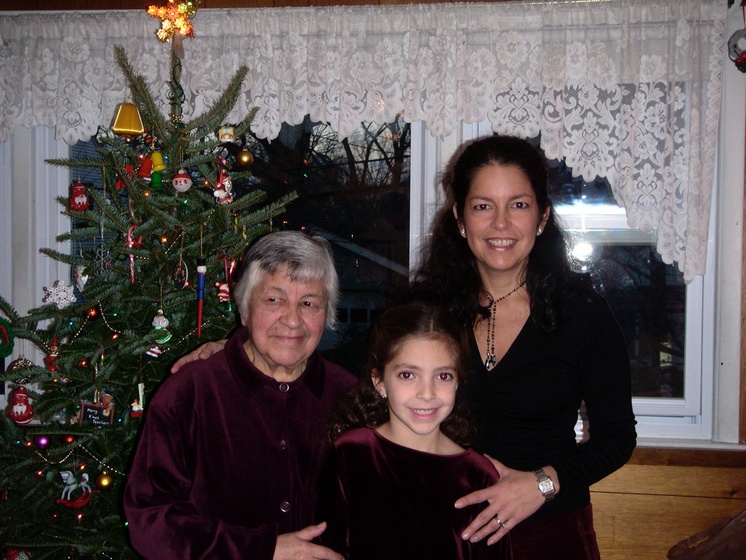I’d say my skin is tan…ish. It’s something I’m self-conscious about.
During the winter, most people assume I’m white. I tell the Sephora employee my shade is chestnut beige, but she just gives me a long stare and tries to hand me foundation in golden ivory. I always get a little offended when she does that.
My mother is Chilean and Dominican, and my father is Italian. Even though my dad cooks Italian food for dinner most nights, I’ve always identified more with my mom’s heritage. As my parents worked full-time while I was growing up, I spent most days with my mom’s mom, Grandma Elena. During that time, I only knew her as a grey-haired, 4’9” old lady who took me for walks in the park and spoke Spanish in hushed tones. Years later, my mom told me how Grandma Elena almost died of seasickness on the boat ride from Chile, entered the country with just fifty dollars, and worked in a New York City sweatshop to support herself and her family.
During high school, my mom’s peers called her a nerd. Then, New York University offered her a full academic scholarship. She studied accounting, not because she loved it, but because she wanted to guarantee herself an income directly out of college. Today, she holds a senior position at her company, represents Latina women in the real estate industry, and mentors Spanish-speaking families who move into our local school district.
When I was 13, I wanted to be like my mom. After she left for work in the morning, I’d go into her closet to scrounge for thongs and try on sweaters. When I got out of school, I’d visit her office and do my homework as we sat side-by-side at her desk. I borrowed her jewelry, sprayed myself with her perfume, and even tried to paint my face with her makeup. It was always too dark for me.
When I was in high school, I returned from a tropical family vacation and was greeted by classmates with comments like “Woah, you’re black.” Once, I sat down at my desk in physics and my lab partner turned his head and said, “Oh, now I can tell that you’re Hispanic.” For some reason, these remarks sort of satisfied me. They helped validate not only my tan-ish skin color, but also my heritage. In many ways, they helped me validate myself.
Soon came the horrid college application process. My guidance counselor told me about affirmative action. Checking the “Hispanic” box might increase my chances of admission, but I promised myself that I would be honest.
Name? Okay. Address? Got it. Birthday? Yep. Are you Hispanic/Latino? Oh man, skip.
Regardless of your answer to the prior question, how do you identify yourself? Long pause, skip again. The questions that many applicants answered easily were the ones that held me up longest.
In my head, I tried to quantify my own Hispanic-ness. How much Spanish do I actually know? Does it matter that I had a Sweet Sixteen instead of a Quinceañera? How many nights a week do we eat arroz con frijoles? If I felt the need to question it, should I even check the box? That question hurt most of all.


